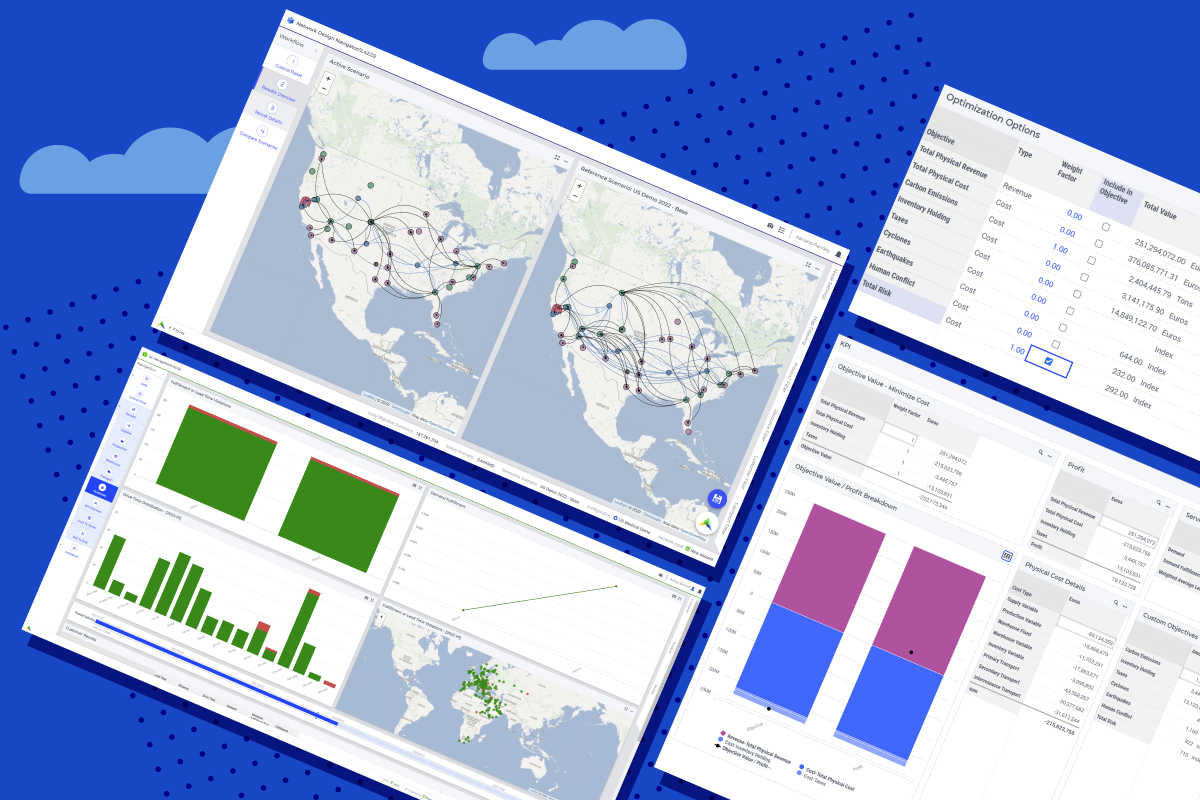Why you can no longer design your supply chain network with Excel?
Back in 2019, we started offering a free assessment for supply chain professionals to evaluate their network design maturity. From the 2019 research pool, we learned that 60% of respondents used spreadsheets to run calculations for supply chain design decisions.
Fast-forward to 2023 and not much has changed. Spreadsheets are still one of the most predominant tools in supply chain. They are familiar, inexpensive, and convenient. But they also pose serious setbacks for organizations.
What does supply chain network design with spreadsheets look like?
Typically, the process goes something like this: somebody in senior management identifies a problem. For instance, a Distribution Center (DC) lease that is expiring soon. Management needs to decide whether to renew it or move the DC somewhere else. An analyst will be tasked with mapping the supply chain, costing it out with the current DC, and running the same cost calculations with a few alternatives. The purpose is to evaluate what the difference in costs is. Spreadsheets are the most widely used supply chain planning tool and they carry nearly zero software investment. So, the analyst will typically do the math in Excel.
Things start to get a little more complicated when new questions come up. Because every question is slightly different, the analyst will typically have to build a new spreadsheet template from scratch every time. In today’s volatile business landscape, you can’t afford to have your team build that logic over and over. It’s simply not time-efficient. Your analysts are spending more time building spreadsheets, rather than identifying risks and opportunities quickly.
Spreadsheets have other big disadvantages
Spreadsheets are error-prone. You’re building the logic and formulas yourself, so mistakes can go unnoticed. The in-house knowledge is also hard coded in the Excel model. When the spreadsheet builder leaves, you have a problem: there is no easy knowledge transfer. Read – Is it time to finally retire your spreadsheets?
Integration, collaboration, deployment, and support are all limited to spreadsheets. They make it hard to maintain a single source of truth. If a plan has to be presented to senior executives using more advanced tools, like maps, the analyst will have to import all the data into Tableau, Google Maps, or a similar system every time new scenarios need to be evaluated.
Moreover, Excel has its limits in terms of handling complexity and large data sets. You’re running calculations, instead of optimizations. You’re limited to a current base case and what your gut feel tells you might be a suitable alternative. This means you may be leaving some valuable options unexplored.
Are spreadsheets ever a good fit?
If your supply chain network is not large or complex and you don’t experience a lot of volatility, spreadsheets might still be a good fit. But if you’re making big money decisions for a large to medium-sized network, it’s worth investing in more advanced software.
What are the signs that you need to move on?
Finding out whether you need to reshore production to cope with market instability, or identifying whether you need to expand your capacity with a new factory are complex questions. If you feel that spreadsheets are not robust enough to make these kinds of decisions, it’s time to consider alternatives.
Watch our on-demand webinar to explore the main technology types for supply chain network design, with their pros, cons, and capabilities – Supply Chain Network Design: What Are Your Options.
Lack of agility and repeatability is another indicator that you need to move on. If you find that you’re constantly going back to the drawing board to answer complex network design questions or sense that you are missing opportunities, it might be time to consider more advanced tools like AIMMS Network Design, which comes with built-in optimization and scenario modeling capabilities.
Will spreadsheets still remain in your toolset?
Most likely, they will. Spreadsheets will remain a helpful data entry and management tool, especially if you’re using other software to run scenarios and optimization and need to configure your data for import. A direct connection with your database is always an option if you mean to replace them for data handling as well.
The bottom line is: that running complex calculations with spreadsheets in today’s business landscape is untenable.
Ready to replace Excel with more advanced network design software?
We put together a 10-question assessment to help you assess if you’re ready to embrace more advanced tools.





